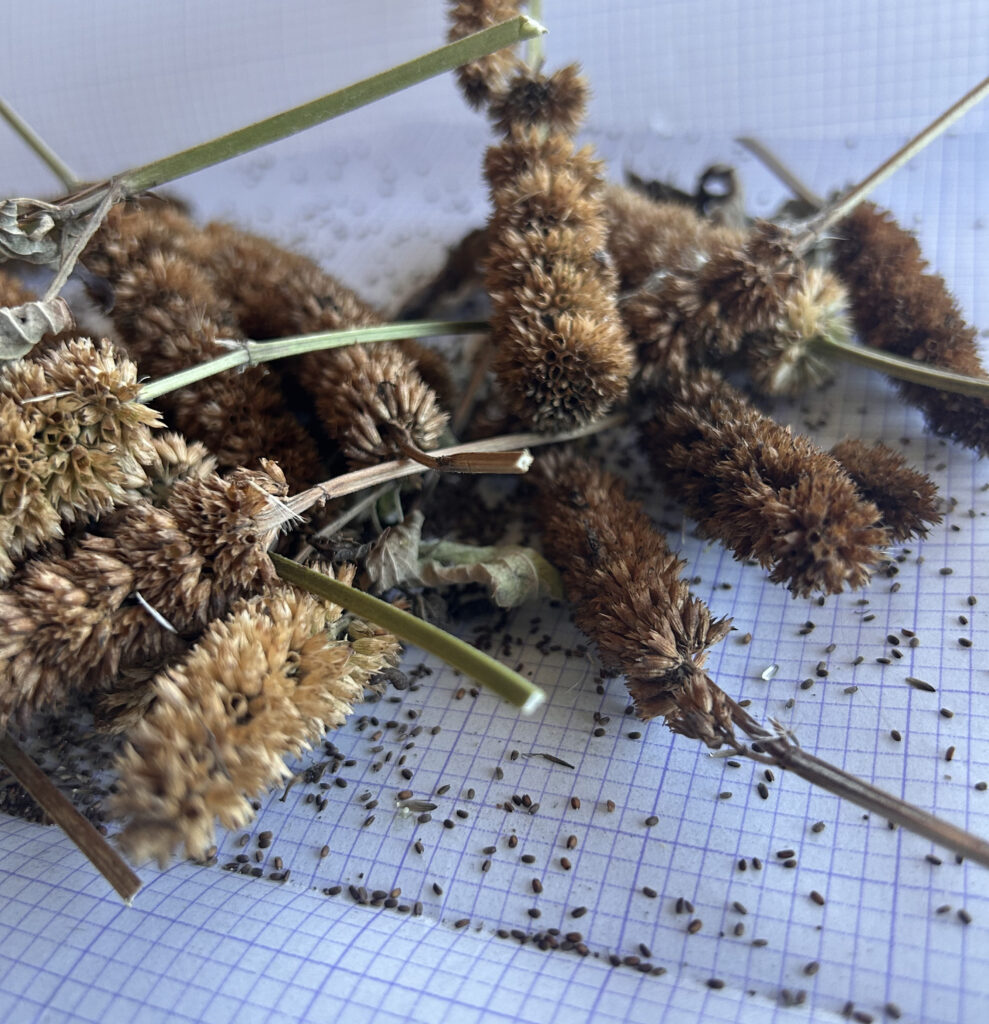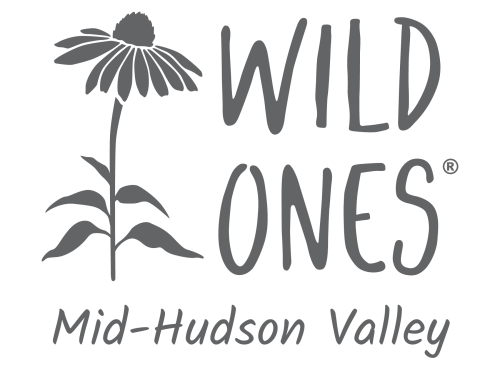by Logan Fisher

What better place to begin ecological restoration work than at the very start—seeds? The potential within a single seed is one of nature’s greatest mysteries. Will it grow into a deep-rooted perennial, living for decades? Will it sprout as an annual, bursting into bloom in just a few months? Does it need to pass through the stomach of an animal before it can take root? The possibilities are endless, reflecting the astonishing diversity of plant life on Earth.
Yet, as we marvel at the resilience of native seeds, we must also recognize the growing threats to their survival. Habitat destruction through urbanization, extractive industries, invasive species, and large-scale agriculture is driving biodiversity loss at an alarming rate. Climate change—fueled by fossil fuels—adds another layer of unpredictability. What happens when an unexpected cold snap wipes out fragile seedlings? When an unusually dry spring leaves seeds dormant with no moisture to awaken them? When invasive plants form dense mats, smothering native seedlings before they can emerge? An uncertain climate means an uncertain future for the plants and animals that depend on stable ecosystems.
But this is not the end of the story. Even in the face of these challenges, we are not powerless. As stewards of the Earth, we can take action to support plant regeneration, protect biodiversity, and restore balance to our ecosystems.
How? By cultivating native plants, managing invasive species, and creating habitat. Native plants are the foundation of any healthy ecosystem, having coevolved with the life around them—bacteria, fungi, animals, and other plants—over thousands of years. They form the intricate web of relationships that sustains life on Earth. By prioritizing native plants, we can directly support local biodiversity and help it recover and thrive in the face of rapid environmental change.
This year at Wild Ones Mid-Hudson Valley, we’re focusing on native seeds and their role in ecological restoration. Our goal is to equip you with the knowledge of what to collect and when, empowering you to nurture native plants and create your own patch of wildness. By providing tools and insights into seed collection and propagation, we hope to help you steward and diversify your native plant garden—ensuring a thriving future for plants, pollinators, and the ecosystems we all depend on.
Beginning in April, each of our newsletters will highlight 3-5 plant species to monitor in your garden or on your property, complete with seed collection advice. We do not condone or promote collection in wild places, such as state parks or nature reserves, as this can be detrimental to local populations of plants. Permits are required for collecting species and are obtained from private or government-owned land such as state parks, federal wildlife refuges, national forests and state conservation departments. All of that said, now is a good time to set forth protocols and supplies needed for a season of collecting native seeds.
Items you will need:
- Paper bags or envelopes (one for each species)
- Pruners or garden snips (for cutting stems and seed heads)
- Gloves
- Markers (permanent for labeling bags and containers)
- Large pan or baking sheet (for cleaning and sorting seeds)
- Water-proof containers (glass jars, airtight containers)
Extra items you might want:
- Mesh screens or fine sieves (for cleaning and separating seeds from chaff)
- Tweezers (for handling or cleaning seeds)
- Scale (for measuring collected seed quantities)
- Zip ties or rubber bands (to bundle seed heads for drying in some cases)
- Hand lens or magnifying glass (to inspect seeds for insect pests)
Basic steps to collecting native seeds:
- Monitor Plant Life Cycles Regularly
- Continuously observe what is blooming in your garden and track each plant’s progression through the seasons. This practice strengthens your connection to your garden and helps you anticipate the best times for seed collection. Watch for flower petal drop, fruit formation, and changes in seed heads (browning or yellowing) – these are key indicators that seed may be ready to harvest.
- Identify the right time for collection
- Select flower heads that are completely dry and stems that are firm and accessible.
- Seed heads should be fully mature – typically dry, brown, and beginning to split open or drop seeds naturally.
- Avoid harvesting too early, as immature seeds may not be viable.
- Some species may need to be hand-tested by gently rubbing the seed head to check for seed release.
- Identify the right time for collection
- Select flower heads that are completely dry and stems that are firm and accessible.
- Seed heads should be fully mature – typically dry, brown, and beginning to split open or drop seeds naturally.
- Avoid harvesting too early, as immature seeds may not be viable.
- Some species may need to be hand-tested by gently rubbing the seed head to check for seed release.
- Collect on dry days
- This step is imperative if you will be storing the seeds for a long period of time before use.
- Always harvest on dry days to prevent mold or rot
- If seeds or seed heads are damp due to morning dew or recent rainfall, spread them out on a paper towel or screen to lightly air dry before storage.
- Some seeds need to remain moist (such as Wild Plum, Prunus americana). These seeds are typically wrapped in a flesh-like substance (“aril). Store these inside of a plastic bag instead of a paper bag to retain a low level of moisture.
- Suggested collection techniques
- Bag-shaking Method: cut the seed head or stem and place it upside down inside of a paper bag. Shake gently to encourage seeds to drop naturally. This technique is good for Symphyotrichum, Solidago, and Eupatorium species.
- Tray Method: For plants with tightly packed seed heads, break apart the heads over a clean, dry try to separate the seeds before transferring them to a storage bag. This technique is good for Rudbeckia, Echinacea, and Helianthus species.
- Hand-stripping Method: Some plants, like grasses, allow you to strip the seeds directly into a bag by running your fingers along the stems. This technique is good for Andropogon, Panicum, Verbena, and Schizachyrium species.
- Inspect for insects and debris
- Check collected seeds for insects, as some species lay eggs in developing seeds.
- Remove as much debris, chaff or plant matter, as possible to reduce risk of mold or infestation of seed pests.
- Label for future use
- Species name
- Date of collection
- Collection location
- Germination requirements (e.g. cold stratification, scarification)
- Proper storage methods
- Store seeds in breathable paper bags or envelopes rather than plastic, as plastic can trap moisture and promote mold growth.
- Keep seeds in a cool, dry, and dark location to maintain viability.
- The refrigerator (not the freezer) can be used for storage, but ensure the seeds are in a moisture-proof container (glass jar or something airtight) and placed in a low-humidity drawer.
- Ethical and sustainable collection practices
- Most importantly, when collecting from public or private land, always obtain proper permissions.
- Only collect 10-20% of available seeds from a given plant population to support natural regeneration. This is important for properties not owned by you. If collecting in your own, personal garden and you do not want regeneration, you may collect as freely as you like.
- Prioritize locally adapted native species to maintain genetic integrity.
- Avoid all threatened and endangered plant species, regardless of whose property it may be.
- Preparing seeds for future use
- To maintain seed viability, it is recommended to store them in stable dry conditions (as outlined above) throughout the summer months. Depending on the species, seeds should be sown in late fall to naturally meet their cold stratification requirements and ensure optimal germination in the following growing season.
- Artificial stratification is another method of meeting germination requirements. If you plan to artificially cold-stratify seeds, you can store them in damp concrete sand or propagation sand to mimic natural winter conditions. This method helps break dormancy and improves germination rates when seeds are eventually sown. However, it is essential to ensure outdoor conditions align with the species cold stratification needs before proceeding with this method.
Stay tuned for our upcoming newsletters, where we will go into more detail on different seed types and collection tips for specific species that will soon be blooming and going to seed!

Author Logan Fisher is a seasoned horticulturist specializing in ecological gardening. He works as a Field Operations Manager with Larry Weaner Landscape Associates. He is also the co-founder of Flosagri, a new backyard-style native plant nursery based in Cold Spring, NY. Find out more about Logan and his work at www.flosagri.com
